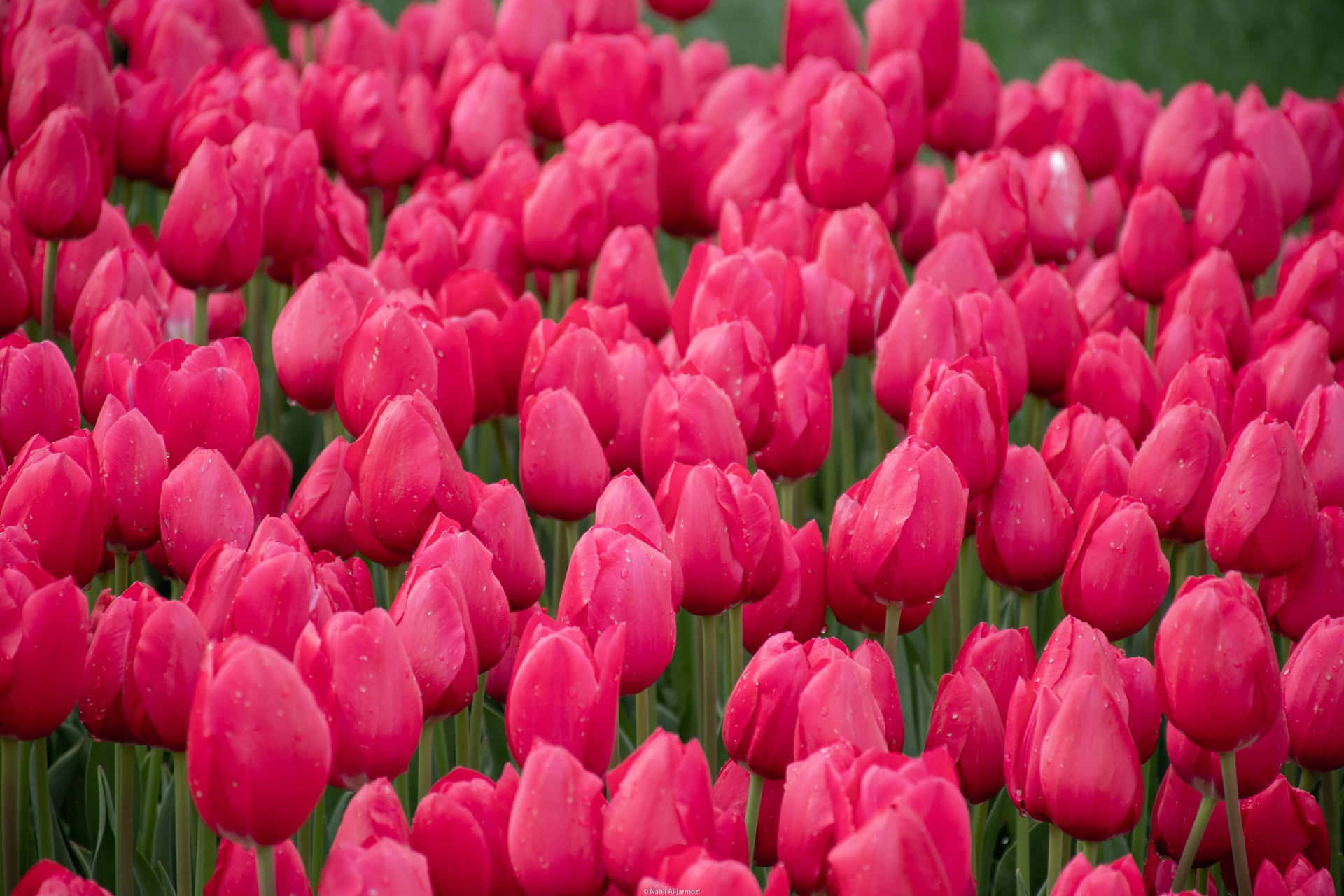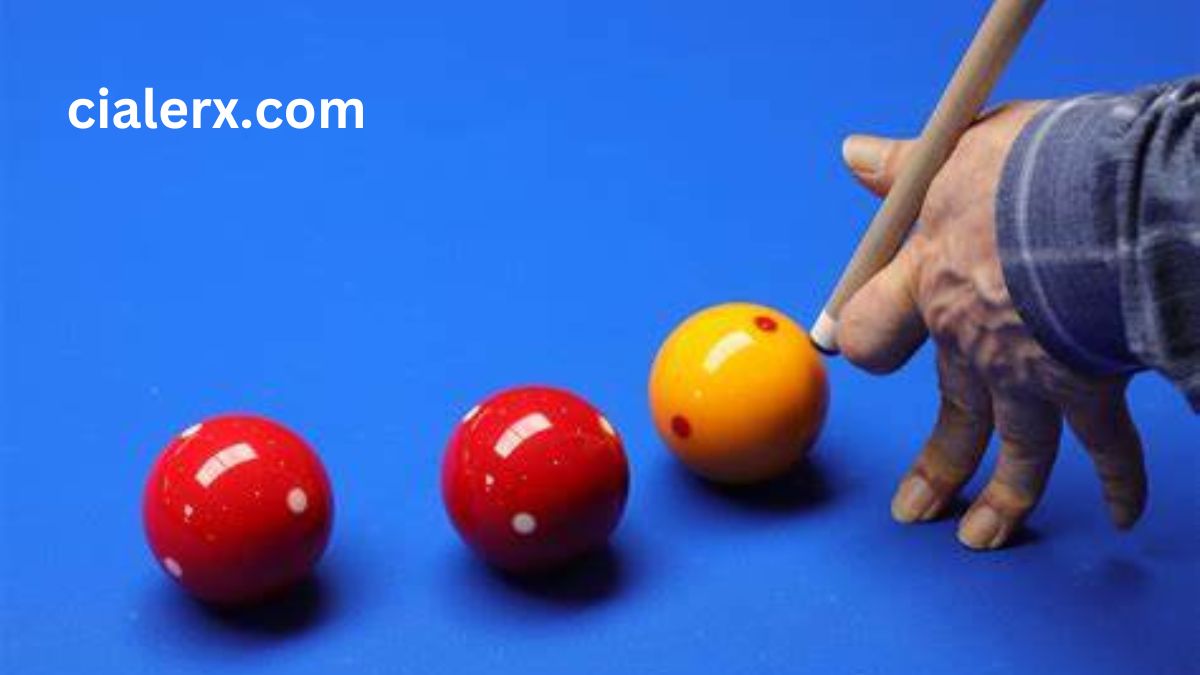HOME
From Couch to Champion: The Impact of the Sports Surge on Amateur Athletes

In recent years, the world has witnessed a remarkable transformation in the realm of sports. No longer confined to elite athletes and professional leagues, amateur sports are experiencing a vibrant renaissance. The surge is palpable, with more people than ever trading their couches for courts, fields, and tracks. Whether it’s local leagues or community events, the excitement around amateur athletics is contagious.
This influx isn’t just about competition; it’s about camaraderie, personal growth, and redefining what it means to be an athlete at any age or skill level. With this shift comes an array of opportunities that inspire individuals to push boundaries and embrace healthier lifestyles. Join us as we explore how this sports surge is reshaping lives and communities alike—turning everyday enthusiasts into champions one game at a time!
The benefits of participating in amateur sports
Participating in amateur sports offers a wealth of benefits that extend beyond physical fitness. Engaging in these activities promotes teamwork and camaraderie, forging friendships that can last a lifetime.
The thrill of competition boosts self-esteem and confidence. Every game or match presents an opportunity to push personal boundaries.
Moreover, amateur sports teach valuable life skills like discipline and time management. Balancing practice schedules with other commitments cultivates responsibility.
Physical health improvements are undeniable too. Regular exercise enhances cardiovascular fitness while reducing the risk of chronic diseases.
Mental well-being also gets a significant boost through participation in sports, as endorphins released during physical activity combat stress and anxiety.
It fosters community spirit. Local events bring people together, creating supportive environments where everyone can thrive without the pressures often associated with professional leagues.
Challenges faced by amateur athletes and how they overcome them
Amateur athletes often juggle multiple responsibilities. Balancing work, family, and training can be daunting. Many face financial constraints that limit access to coaching or quality equipment.
Injuries are another common hurdle. An unexpected setback can derail progress and dampen motivation. Yet, resilience shines through as athletes adapt their routines and seek alternative training methods during recovery.
Time management becomes crucial. Creating a structured schedule allows for consistent practice without it feeling overwhelming. Support systems play a vital role too; friends and family provide encouragement when spirits run low.
Moreover, mental health cannot be overlooked. The pressure to perform may lead to anxiety or burnout. Athletes have started prioritizing mindfulness techniques like meditation or visualization exercises to maintain focus and well-being.
Through sheer determination and creativity in overcoming these obstacles, many amateur athletes continue striving towards their goals with passion intact.
The role of technology in the growth of amateur sports
Technology is a game changer for amateur sports. It has opened new avenues for athletes at all levels.
Wearable tech, like fitness trackers and smartwatches, empowers athletes to monitor their performance closely. This data helps them fine-tune their training regimes effectively.
Social media platforms are another vital aspect of this surge. They allow athletes to showcase their skills and connect with fans directly. A simple video upload can lead to widespread recognition.
Online coaching and training apps provide accessible resources that were once reserved for professionals only. Athletes can now receive expert guidance from anywhere in the world.
Streaming services have made it easier for local competitions to gain visibility beyond regional boundaries. Fans can follow events live, creating a sense of community among supporters.
With technology advancing rapidly, the landscape of amateur sports continues evolving, making participation more engaging than ever before.
Examples of successful amateur athletes turned professionals
Many amateur athletes have made their mark on the professional sports scene. Their journeys often inspire those who dream of similar success.
Take Tom Brady, for instance. Before becoming a legendary NFL quarterback, he was just another college player overlooked in the draft. His relentless dedication transformed him into one of football’s greats.
Serena Williams also started as an enthusiastic young player on public courts in Compton, California. With sheer determination and hard work, she rose to become one of tennis’s all-time champions.
Another notable example is Stephen Curry. He faced doubts during his college years but used that criticism as fuel. Now he’s recognized as a revolutionary figure in basketball.
These stories showcase how passion and perseverance can turn dreams into reality within competitive realms. They remind us that every champion starts somewhere—often from humble beginnings filled with challenges and aspirations.
How the sports surge has impacted local communities and economies
The sports surge has transformed local communities in remarkable ways. Fields and courts that once lay dormant are now bustling with activity. Community members gather, forging connections through shared experiences.
Local businesses benefit significantly from this increased engagement. Sporting events attract fans who dine at nearby restaurants, shop at local stores, and stay in area hotels. This influx of visitors boosts the economy and creates jobs.
Moreover, youth programs flourish as more families invest time and resources into athletic pursuits. Schools prioritize physical education, enhancing the quality of life for students while promoting health awareness.
Volunteer opportunities also abound as residents rally to support teams or host events. This spirit fosters camaraderie among neighbors and strengthens community ties.
As amateur athletes emerge from these programs, they inspire younger generations to pursue their dreams while instilling a sense of pride within their towns. The ripple effect is profound and lasting.
Addressing concerns about safety in amateur sports
Safety is a top priority in amateur sports. As participation rates soar, so do concerns about injuries and proper protocols.
Organizations are stepping up by implementing strict safety guidelines. Coaches and referees receive training to identify risks early on. This proactive approach helps create a safer environment for athletes of all ages.
Parents also play an essential role. They’re encouraged to communicate openly with coaches about any issues or fears regarding their child’s well-being. Such dialogue fosters trust and collaboration.
Additionally, advancements in protective gear contribute significantly to injury prevention. From better helmets in football to cushioned footwear in running, technology enhances safety measures across various sports.
Injuries can still happen, but awareness is key. Regular assessments and emergency action plans ensure that everyone knows what steps to take when accidents occur, further minimizing risk while promoting an enjoyable sporting experience.
Conclusion: Why it’s never too late to join the sports surge and become a champion
The allure of the sports surge is undeniable. The thrill of competition and the camaraderie it brings can transform lives at any age.
Whether you’re picking up a racket or lacing up your running shoes for the first time, every step counts towards personal victory. It’s not just about winning; it’s about growth, resilience, and discovering what you’re capable of.
Communities are buzzing with opportunities to join local leagues or clubs. These spaces welcome everyone—no prior experience required.
Every champion has a beginning, often rooted in passion rather than perfection. What matters most is taking that leap into action.
You hold the power to redefine yourself through sport. So why wait? Embrace this moment and dive headfirst into your journey amidst the thriving sports surge!
HOME
300 Types of Flowers with Names from A to Z (and Pictures)

Flowers have captivated humans for centuries with their stunning beauty and symbolism, offering a wide variety of colors, shapes, and scents. Whether you’re a gardening enthusiast, florist, or simply someone who loves nature, understanding the vast world of flowers can be an enriching experience. This post takes you through 300 types of flowers alphabetically, complete with names, descriptions, and imagery to bring them to life. From the well-known rose to the unique zinnia, discover flowers perfect for every preference and occasion.
Why Learn About Different Flowers?
Knowing about various flowers not only enhances your appreciation for nature but also helps you make informed decisions for gardens, gifts, or decor. Different flowers carry unique meanings and cultural significance, and understanding them can connect you more deeply to your surroundings. This comprehensive guide provides a useful resource for anyone interested in exploring the fascinating diversity of nature’s blooms.
Flowers from A to Z
A – Amaryllis
The amaryllis is known for its large, trumpet-shaped blooms and vibrant colors, such as red, pink, and white. It’s often grown indoors during winter and is a popular holiday flower.
Picture: [Add clear picture of Amaryllis]
B – Begonia
Begonias come in a variety of types, from tuberous to rex begonias. They are loved for their asymmetrical leaves and colorful flowers, making them ideal for gardens or indoor pots.
Picture: [Add clear picture of Begonia]
C – Chrysanthemum
Affectionately called “mums,” chrysanthemums bloom in countless colors and are celebrated worldwide, particularly in Japan, where they symbolize longevity and happiness.
Picture: [Add clear picture of Chrysanthemum]
D – Daffodil
This bright and cheerful spring flower is intrinsically tied to renewal and rebirth. Its striking yellow petals make it a classic favorite for marking the end of winter.
Picture: [Add clear picture of Daffodil]
E – Echinacea
Echinacea, also known as coneflower, is a sturdy perennial prized for its medicinal properties and ability to attract bees and butterflies to gardens.
Picture: [Add clear picture of Echinacea]
F – Freesia
Freesias are known for their sweet scent and bright, bell-shaped flowers. They are a favorite addition to bouquets and symbolize friendship and trust.
Picture: [Add clear picture of Freesia]
G – Gardenia
With its intoxicating fragrance and creamy white blooms, the gardenia is a symbol of elegance and grace, often chosen for bridal bouquets.
Picture: [Add clear picture of Gardenia]
H – Hydrangea
Hydrangeas are lush flowers that bloom in large clusters, offering a delicate color palette from pink and blue to white and purple, depending on soil pH.
Picture: [Add clear picture of Hydrangea]
I – Iris
Named after the Greek goddess of the rainbow, the iris stands out with its deep purple petals and vibrant charm, often found in fine art and gardens alike.
Picture: [Add clear picture of Iris]
J – Jasmine
Jasmine is famous for its sweet aroma and tiny white or yellow blooms. It’s often linked to romance and purity, making it a popular choice in teas and perfumes.
Picture: [Add clear picture of Jasmine]
K – Kangaroo Paw
Native to Australia, this flower gets its name from its unique shape resembling a kangaroo’s paw. Its vibrant red and green petals make it a standout.
Picture: [Add clear picture of Kangaroo Paw]
L – Lavender
Famous for its calming fragrance, lavender is not just visually striking with its purple blooms but also frequently used in aromatherapy and home remedies.
Picture: [Add clear picture of Lavender]
M – Magnolia
Magnolias are timeless beauties found on trees that bloom in white, pink, or purple flowers. They embody dignity and nobility in various cultures.
Picture: [Add clear picture of Magnolia]
N – Nasturtium
Known for its vibrant orange, yellow, or red petals, nasturtium is both decorative in gardens and edible, adding spice to salads and garnishes.
Picture: [Add clear picture of Nasturtium]
O – Orchid
Orchids are exotic flowers that come in numerous colors and variations. They symbolize luxury and strength and thrive in tropical environments.
Picture: [Add clear picture of Orchid]
P – Peony
Bright and fluffy, peonies are prized in gardens and florist shops for their luscious blooms and their association with romance and prosperity.
Picture: [Add clear picture of Peony]
Q – Queen Anne’s Lace
This delicate white flower grows wild in fields and is named for its lacy appearance. It’s often used as an accent in bouquets.
Picture: [Add clear picture of Queen Anne’s Lace]
R – Rose
A timeless symbol of love and passion, roses exist in countless colors and styles, each carrying a unique message from admiration to gratitude.
Picture: [Add clear picture of Rose]
S – Sunflower
With their iconic, golden-yellow petals and brown centers, sunflowers are associated with positivity, strength, and warmth. They also attract pollinators.
Picture: [Add clear picture of Sunflower]
T – Tulip
Tulips are celebrated spring blooms that come in nearly every color of the rainbow. They convey a sense of grace and enduring beauty.
Picture: [Add clear picture of Tulip]
U – Ursinia
Native to South Africa, ursinias are cheery flowers with daisy-like petals and contrasting dark centers, sure to brighten any garden.
Picture: [Add clear picture of Ursinia]
V – Verbena
Verbena thrives in gardens with delicate clusters of vibrant blooms. It’s perfect for hanging baskets and borders, adding a fresh, colorful touch.
Picture: [Add clear picture of Verbena]
W – Water Lily
Synonymous with tranquility and beauty, water lilies float on ponds and small bodies of water, showcasing their unique blooms amidst round green leaves.
Picture: [Add clear picture of Water Lily]
X – Xeranthemum
This hardy flower is characterized by its papery petals, often used in dried arrangements thanks to its long-lasting nature.
Picture: [Add clear picture of Xeranthemum]
Y – Yellow Bells
Also known as Tecoma stans, this cheerful flowering plant produces tubular yellow blooms and makes for an excellent garden border shrub.
Picture: [Add clear picture of Yellow Bells]
Z – Zinnia
Zinnias are bright and bold flowers that bloom in a variety of colors. They add vibrancy to gardens and symbolize lasting friendship.
HOME
History of Cue Pool: From Bar Tables to Championship Tournaments

Cue pool has a rich and vibrant history that captivates enthusiasts from all walks of life. From the smoky corners of local taverns to the glitzy arenas hosting championship tournaments, this game has evolved into much more than just a pastime. With its origins steeped in tradition, cue pool is now recognized as both an art form and a competitive sport.
As we take a journey through time, we’ll explore how the humble cue table transformed over centuries and became integral to social gatherings. We’ll uncover the stories behind iconic players who have left their mark on this beloved game. Whether you’re an occasional player or a dedicated fan, there’s something fascinating waiting for you in the evolution of cue pool. Join us as we break down its milestones and look ahead to what lies in store for this timeless activity!
Evolution of Cue Pool Tables
Cue pool tables have undergone significant transformation since their inception. Initially, these tables were simple wooden structures, often designed for practicality rather than aesthetics. The early versions had a rudimentary felt covering and lacked the precise engineering we see today.
As the game gained popularity, manufacturers began to focus on enhancing both form and function. The introduction of slate tops improved playability by providing a smoother surface. Felt colors expanded beyond green, allowing for personalization in bars and homes alike.
With the rise of competitive play during the 20th century, standards became more defined. Official tournament sizes emerged alongside specialized pockets that catered to different styles of gameplay. Innovations like adjustable legs also made it easier to set up tables in various venues.
Today’s cue pool tables reflect advanced materials and craftsmanship while maintaining deep-rooted traditions within this beloved sport.
The Rise of Cue Pool in Bars and Taverns
The ambiance of bars and taverns transformed dramatically with the introduction of cue pool. It became more than just a game; it turned into a social activity that brought people together.
In dimly lit corners, players gathered around tables, exchanging stories and laughter. The clack of balls striking each other created an inviting atmosphere. Friends challenged one another while strangers bonded over their shared love for the game.
Taverns began hosting amateur tournaments to engage customers further. These events not only increased foot traffic but also forged tight-knit communities centered on friendly competition. With every match played, the culture surrounding cue pool deepened within these lively establishments.
Professional Tournaments and Players in the 20th Century
The 20th century marked a turning point for cue pool, elevating it from barroom pastime to a competitive sport. The establishment of professional tournaments drew in enthusiasts and players alike. Events like the World Pool Championship gained prominence, showcasing exceptional talent.
Iconic figures emerged during this era. Players such as Willie Mosconi became household names, known for their extraordinary skills and charismatic personalities. Their contributions helped elevate the status of cue pool significantly.
Television played a crucial role in popularizing these competitions. Matches were broadcasted to millions, captivating audiences with intense rivalries and breathtaking shots. This exposure transformed casual fans into dedicated followers.
As more tournaments surfaced globally, sponsorships began to flow in. Cue manufacturers saw an opportunity to support players while promoting their products—leading to significant growth within the industry itself. The synergy between players and brands laid the groundwork for future generations of cue pool athletes.
Modern Changes and Innovations in Cue Pool Equipment
The world of cue pool has seen remarkable advances in equipment design and technology. Today’s players enjoy cues made from advanced materials like carbon fiber, providing enhanced durability and precision. These innovations allow for better control over speed and spin.
Table surfaces have also evolved. High-quality felt now offers a smoother playing experience, reducing friction for faster play. Additionally, the introduction of customizable table sizes caters to different skill levels and spaces.
Cue balls are no longer just simple spheres; they feature improved weight distribution for consistent performance. Many even come with built-in tracking technology to help players analyze their shots.
Moreover, digital scoring systems have transformed how games are managed in tournaments and casual play alike. Players can focus on their game without the distraction of manual scorekeeping or disputes over points scored.
Impact of Technology on Cue Pool
Technology has dramatically reshaped the landscape of cue pool. From advanced table designs to high-tech cues, the game has evolved significantly.
Digital scoring systems now streamline tournament play. Players can focus on their skills rather than keeping track of points manually. This innovation enhances accuracy and reduces disputes among competitors.
Online platforms have also revolutionized how enthusiasts connect. Virtual tournaments allow players from different continents to compete effortlessly. Streaming services bring matches into living rooms, increasing audience engagement.
Moreover, augmented reality is making waves in training sessions. Players can visualize angles and shots before executing them, improving their strategies on the fly.
Even mobile apps contribute to this evolution by providing tips and tutorials for players at all levels. The accessibility of resources means anyone can learn or refine their skills anytime, anywhere.
As technology continues to advance, cue pool stands poised for exciting developments that will keep fans engaged for years to come.
Popularity of Cue Pool in Different Parts of the World
Cue pool enjoys diverse popularity across the globe. In North America, it’s a staple in bars and recreational centers. The casual atmosphere invites players of all skill levels to engage in friendly competition.
Europe has its own flavor of cue pool, with variations like English billiards gaining traction. Here, players often appreciate the strategic elements involved.
In Asia, especially countries like China and Japan, cue sports have surged in recognition. Local tournaments attract significant attention and showcase talented contenders.
Australia also embraces this game passionately. Many clubs host leagues that encourage both social play and serious competition.
Cultural influences shape how cue pool is perceived everywhere. These differences contribute to a rich tapestry of styles and approaches within the sport globally. Each region brings its unique twist to this beloved pastime, enhancing its universal charm.
Future of Cue Pool: Predictions and Speculations
The future of cue pool is filled with exciting possibilities. As technology advances, we may see enhanced training tools that help players refine their skills more efficiently. Virtual reality could create immersive practice sessions, allowing enthusiasts to play in lifelike environments from the comfort of their homes.
Sustainability might also come into focus. Eco-friendly materials for tables and cues are likely to emerge as consumers become more environmentally conscious. This shift can lead to a new wave of products designed not just for performance but also for sustainability.
Moreover, the global appeal of cue pool will continue to grow. With an increase in international tournaments, players from diverse backgrounds will bring fresh styles and strategies to the game.
Social media platforms may further elevate amateur players by providing them visibility and opportunities previously unavailable. The landscape is changing rapidly; who knows what innovations lie on the horizon?
Conclusion
Cue pool has come a long way from its humble beginnings. Its evolution reflects not just changes in equipment, but also shifts in culture and leisure activities. From bar tables to professional tournaments, the journey of cue pool showcases the passion and dedication of players across generations.
Today’s innovations continue to enhance gameplay, making it more accessible and enjoyable for enthusiasts worldwide. The influence of technology is undeniable; apps and online platforms have expanded how people engage with this classic game.
As we look ahead, cue pool is poised for further growth. New styles may emerge while traditional formats remain beloved by many. With its rich history and vibrant present, cue pool will undoubtedly keep captivating fans around the globe for years to come.
HOME
The Enchanting Allure of the White Wizard Philodendron: A Plant Lover’s Guide

If you’re a plant enthusiast or simply someone who appreciates the beauty of nature, the White Wizard Philodendron may just steal your heart. With its striking white and green variegated leaves, this tropical gem adds a touch of magic to any indoor space. But it’s not just about looks; there’s something enchanting about how this plant can transform your home environment. Whether you’re new to houseplants or an experienced collector, the allure of the White Wizard Philodendron beckons. Let’s delve deeper into what makes this stunning plant so special and how you can care for it like a pro!
History and Origin of the Plant
The White Wizard Philodendron has a captivating backstory that intrigues plant enthusiasts. Native to the tropical rainforests of South America, it thrives in lush, humid environments where sunlight filters through dense canopies.
This stunning variety was developed from the classic Philodendron family, known for its diverse and striking foliage. The White Wizard emerged as breeders experimented with various hybrids, focusing on unique variegation patterns.
What sets this plant apart is its enchanting white and green leaves. This distinctive color contrast captivates collectors around the globe.
In recent years, it gained popularity among houseplant lovers, becoming a sought-after addition to indoor gardens and collections alike. Its rarity enhances its allure further, making each specimen feel like a treasure found in nature’s bounty.
Characteristics and Growing Conditions
The White Wizard Philodendron is a stunning sight, with its striking white and green variegated leaves. Each leaf boasts unique patterns, making every plant one-of-a-kind. The shape of the leaves is typically heart-shaped, adding to its charm.
When it comes to growing conditions, this beauty thrives in bright, indirect light. Direct sunlight can scorch those delicate leaves. It prefers temperatures between 65°F and 80°F for optimal growth.
Humidity plays a crucial role too. The White Wizard enjoys higher humidity levels but can adapt to average home conditions if necessary. Watering should be done when the top inch of soil feels dry; overwatering may lead to root rot.
Using well-draining potting mix helps support healthy roots and encourages growth while preventing waterlogging issues that could harm your plant’s health. With these simple considerations in mind, you’ll have a vibrant White Wizard flourishing in your space!
Benefits of Having a White Wizard Philodendron in Your Home
The White Wizard Philodendron is more than just a pretty face. It brings a touch of elegance to any space with its striking variegated leaves. These beautiful greens can elevate your home decor, making rooms feel vibrant and alive.
Beyond aesthetics, this plant also contributes to improved air quality. Like many houseplants, it helps filter toxins from the air, promoting a healthier living environment for you and your family.
Caring for a White Wizard Philodendron can also be therapeutic. Nurturing this plant encourages mindfulness as you engage in routines that support its growth.
Having one around creates an inviting atmosphere that sparks conversation among guests. Its unique appearance often piques curiosity and admiration alike. The subtle charm of the White Wizard makes it an ideal companion in every home.
How to Care for Your White Wizard Philodendron
Caring for your White Wizard Philodendron is a delightful experience. This plant thrives in bright, indirect light. Direct sunlight can scorch its stunning leaves.
Watering is crucial. Keep the soil slightly moist but never soggy. Allow the top inch of soil to dry out between waterings. Overwatering can lead to root rot.
Humidity plays a vital role too. Aim for around 50% humidity if possible, as this variety loves moisture in the air. Consider misting it or placing a humidifier nearby.
Fertilization should be done during the growing season, typically spring and summer. Use a balanced houseplant fertilizer every four to six weeks to keep it healthy and vibrant.
Make sure you check for pests regularly, especially spider mites and aphids. A quick inspection will help catch any issues early on before they escalate into bigger problems within your beautiful greenery collection!
Tips for Propagating and Repotting the Plant
Propagating the White Wizard Philodendron can be a rewarding experience. Start by selecting a healthy stem with at least one node. Use clean, sharp scissors to take your cutting, ensuring it’s around six inches long.
Place the cutting in water or soil. If using water, ensure the node is submerged but leaves stay above for air circulation. Change the water regularly to keep it fresh.
When repotting, choose a pot that’s slightly larger than its current home. This will allow room for growth without overwhelming the plant. Opt for well-draining soil mixed with perlite or orchid bark to promote aeration.
Always repot during spring when your plant is actively growing. Gently loosen any compacted roots before placing it in its new container. Water thoroughly after repotting and keep an eye on moisture levels as your plant settles into its new space.
Common Pests and Diseases to Watch Out For
The White Wizard Philodendron, while stunning, can attract some unwelcome guests. Common pests include spider mites, mealybugs, and aphids. These tiny invaders thrive in warm conditions and can quickly multiply.
Spider mites often leave fine webbing on the leaves. Their presence may cause yellowing or stippling. Regularly inspecting your plant is crucial for early detection.
Mealybugs appear as small white cottony masses on stems and leaves. They suck sap from plants, leading to potential growth stunting.
Aphids are another frequent pest that clusters around new growth. They also feed off the sap but can be managed with careful monitoring.
In addition to pests, watch out for diseases like root rot caused by overwatering. Ensure your potting mix has good drainage to prevent this issue.
Keeping an eye on these common threats will help maintain your White Wizard’s beauty.
Creative Ways to Decorate with the White Wizard Philodendron
The White Wizard Philodendron is not just a plant; it’s a statement piece that can transform any space. With its striking white and green variegation, this stunning foliage creates an eye-catching focal point in your home decor.
Consider placing your White Wizard on a pedestal or stand to elevate its beauty. This allows the leaves to catch the light and cast enchanting shadows on nearby walls. Alternatively, grouping several plants together can create a lush corner of greenery that feels vibrant and alive.
Hanging planters are another fantastic option. The cascading leaves add depth and texture while drawing the eye upward—perfect for small spaces where floor area is limited yet you want to make an impact.
For those who enjoy DIY projects, why not craft unique macramé hangers? These handmade holders will complement the natural aesthetics of the plant while giving your living space a personal touch.
If you’re keen on mixing styles, try pairing your White Wizard with more colorful pots or decorative trays. A bold pot against its subtle hues can create dynamic contrast that livens up any room.
Don’t hesitate to incorporate this magical plant into themed displays. Whether it’s for seasonal décor or simply as part of everyday arrangements, let creativity guide you in showcasing this captivating houseplant throughout your home.
-

 HOME11 months ago
HOME11 months agoTarget Trends: What’s Hot in Stores Right Now?
-

 BUSINESS11 months ago
BUSINESS11 months agoCustomer Satisfaction: Definition and Importance
-

 HOME11 months ago
HOME11 months agoFrom Ideas to Innovations: How Inventors Change Our World
-

 HOME6 months ago
HOME6 months ago300 Types of Flowers with Names from A to Z (and Pictures)
-

 ENTERTAINMENT11 months ago
ENTERTAINMENT11 months agoFrom Isolation to Community: Strategies for Connecting with Readers
-

 HEALTH11 months ago
HEALTH11 months agoThe Truth About Vasectomies: Myths, Facts, and Everything In Between
-

 TECH10 months ago
TECH10 months agoThe Risks of Disconnecting Your AC Compressor: A Comprehensive Guide
-

 HEALTH11 months ago
HEALTH11 months agoRevitalize Your Waistline: 7 Delicious Flat Stomach Detox Water Recipes for Weight Loss
